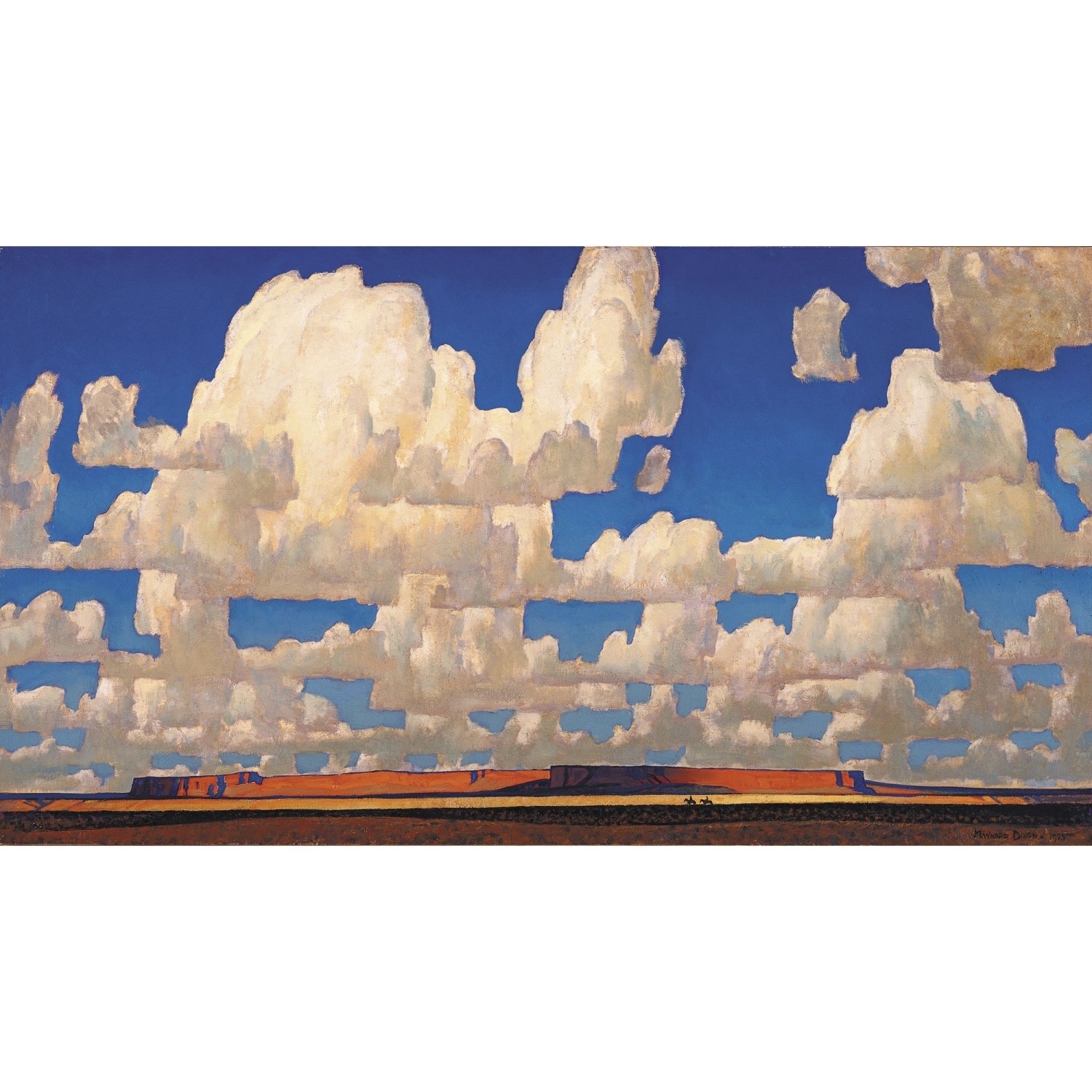Maynard Dixon was an early twentieth-century American artist who painted the vast and open landscapes of the untamed American West. While he spent several years living in San Francisco, California, USA, he was drawn to the American Southwest, ultimately settling in the states of Utah and Arizona.
The clouds in Maynard’s paintings were stylised but also meteorologically adept. Cloud World, for instance, which he painted in 1925, shows Cumulus clouds rising in mounds from flat bases. Cumulus often do have flat bases like this when they develop on thermals rising swiftly from Sun-baked deserts, like those of the American Southwest.
As the air rises in these invisible columns, it expands and cools enough for the moisture it contains to condense into droplets we see as the Cumulus cloud. Depending on the amount of moisture in the air, there’s a certain altitude at which it’ll have cooled enough for the cloud droplets to appear, and this determines the base of the Cumulus. These look markedly flat when the thermals are vigorous and full of energy – just like they would have been over the landscape of Dixon’s Cloud World.
Cloud World (1925) by Maynard Dixon is in a private collection. It was suggested as a Cloud-a-Day by Julie Goodding (Member 59,270).



